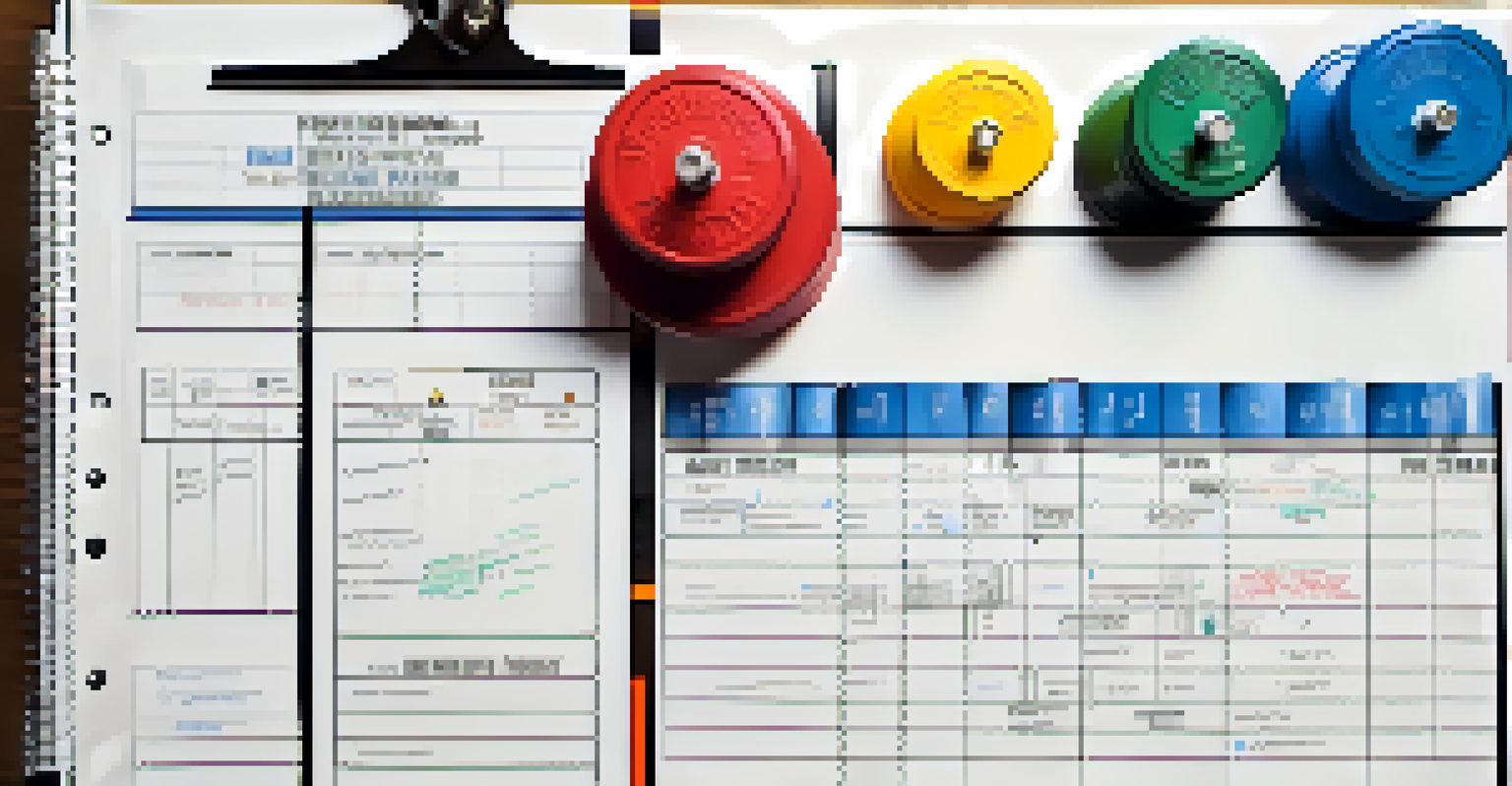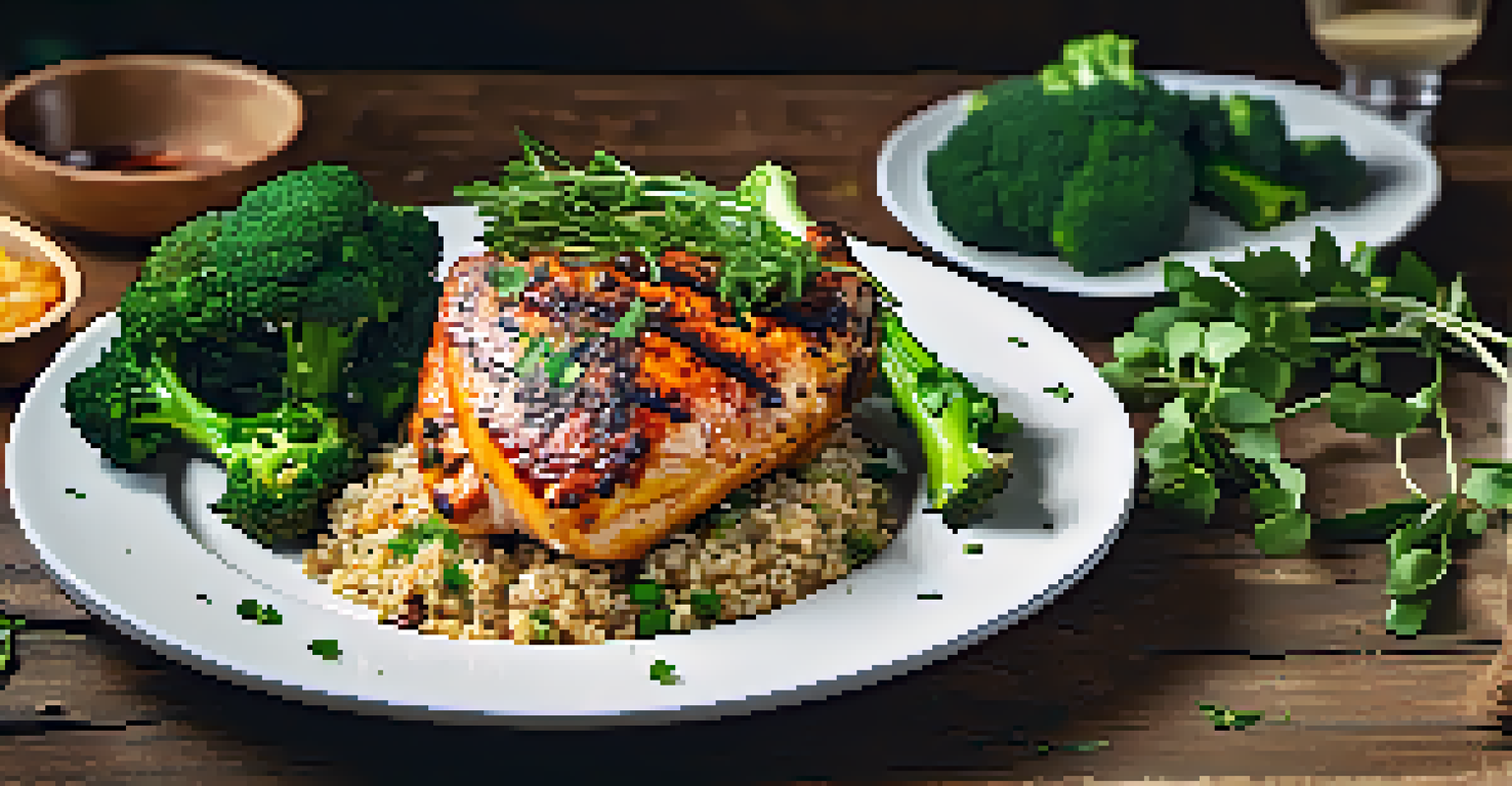Creating a Personalized Powerlifting Goal Plan

Understanding Your Current Powerlifting Level
Before diving into goal setting, it's crucial to assess where you currently stand in your powerlifting journey. Are you a complete beginner, or do you have some experience under the bar? Understanding your starting point will inform the type of goals you set, making them more attainable and realistic.
Setting goals is the first step in turning the invisible into the visible.
For instance, if you're new to powerlifting, your initial goals might focus on mastering form and technique rather than hitting heavy weights. On the other hand, an experienced lifter may need to set more specific targets, like increasing their squat by a certain percentage within a defined timeframe.
Taking the time to evaluate your abilities will provide you with a solid foundation. By recognizing your strengths and areas for improvement, you can tailor your training plan to maximize your progress and keep you motivated.
Setting SMART Goals for Powerlifting
When setting goals for powerlifting, the SMART criteria can be incredibly helpful. SMART stands for Specific, Measurable, Achievable, Relevant, and Time-bound. This method ensures your goals are clear and reachable, rather than vague aspirations that can lead to frustration.

For example, instead of saying, 'I want to lift heavier,' you might set a goal like, 'I want to increase my deadlift by 20 pounds in the next three months.' This goal is specific and measurable, which makes it easier to track your progress and stay focused.
Assess Your Powerlifting Level
Understanding your current abilities helps set realistic and attainable goals.
By using the SMART framework, you not only clarify your objectives but also create a roadmap for achieving them. This structured approach can significantly enhance your motivation and commitment to your powerlifting journey.
Identifying Key Lifts to Focus On
Powerlifting consists of three main lifts: the squat, bench press, and deadlift. Identifying which lifts to prioritize based on your current level and goals is essential. For instance, if your squat is significantly weaker than your bench press, it might be wise to focus on improving your squat first.
Success is the sum of small efforts, repeated day in and day out.
Consider your specific strengths and weaknesses; perhaps you excel at bench press but struggle with deadlifts. By concentrating on the lifts that require more attention, you can create a more balanced and effective training program.
Moreover, focusing on key lifts can help you avoid burnout. Instead of spreading yourself too thin across multiple exercises, honing in on a few can lead to greater improvements and a more satisfying training experience.
Creating a Structured Training Schedule
A well-structured training schedule is crucial for reaching your powerlifting goals. This schedule should include the frequency of your workouts, the types of exercises you'll perform, and how you'll track your progress. Consistency is key, so developing a routine that fits your lifestyle is essential.
For example, you might decide to train three times a week, focusing on one main lift each session, followed by accessory exercises that support your primary goals. This structure not only helps you stay organized but also ensures that you're dedicating enough time to each lift.
Set SMART Powerlifting Goals
Using the SMART criteria ensures your goals are specific, measurable, and achievable.
Additionally, be sure to incorporate rest days into your schedule. Recovery is just as important as the workouts themselves, allowing your muscles to repair and grow stronger. Balancing training with adequate recovery will lead to sustainable progress in your powerlifting journey.
Incorporating Nutrition into Your Goal Plan
Nutrition plays a significant role in achieving your powerlifting goals. Fueling your body with the right nutrients can enhance performance, recovery, and overall progress. A well-balanced diet rich in proteins, carbohydrates, and healthy fats will support your training regimen.
For example, incorporating lean proteins like chicken or tofu can help with muscle repair, while complex carbohydrates from whole grains provide the energy needed for intense lifting sessions. Don’t forget about hydration; staying hydrated is essential for optimal performance.
Additionally, consider tracking your food intake to ensure you're meeting your nutritional needs. This can help you identify any gaps in your diet and make the necessary adjustments to support your powerlifting journey.
Monitoring Progress and Adjusting Goals
Tracking your progress is vital in any fitness journey, and powerlifting is no exception. Regularly logging your lifts, workouts, and nutrition can provide valuable insights into your advancements and areas needing improvement. This practice not only keeps you accountable but also serves as a motivational tool.
For instance, if you notice that your squat has plateaued, it might be time to reassess your training plan or nutrition. Adjusting your goals based on your progress ensures that you remain challenged and engaged in your training.
Track Progress and Adjust Goals
Regularly monitoring your lifts and nutrition allows for necessary adjustments to keep you challenged.
Moreover, don't be afraid to celebrate your achievements, no matter how small. Recognizing your progress fosters a positive mindset, helping you stay committed to your personalized powerlifting goal plan.
Staying Motivated Throughout Your Journey
Maintaining motivation can be one of the most challenging aspects of any fitness journey, including powerlifting. Surrounding yourself with a supportive community can significantly enhance your experience. Whether it's joining a local gym, finding a workout buddy, or participating in online forums, connection with others can provide encouragement.
Additionally, consider setting mini-goals along the way to your larger objectives. These smaller milestones can offer a sense of accomplishment and keep your spirits high as you progress. For example, if your ultimate goal is to squat 300 pounds, celebrate when you hit 250 pounds.

Lastly, remember to enjoy the process. Powerlifting is not just about numbers; it's about personal growth, discipline, and discovering what you're capable of achieving. Embracing the journey will help you stay motivated and committed to your goals.